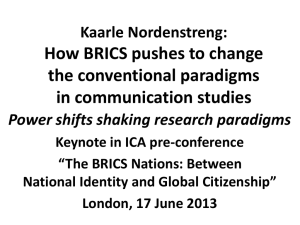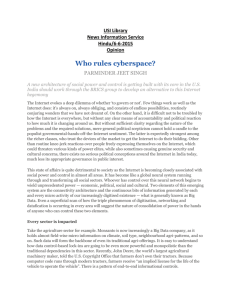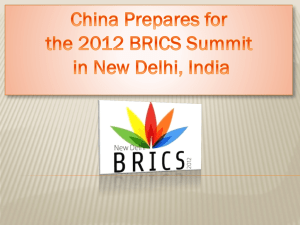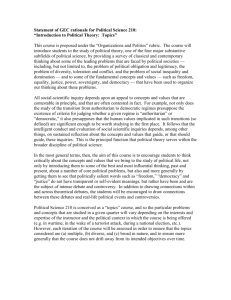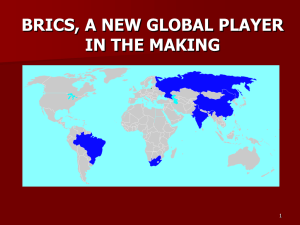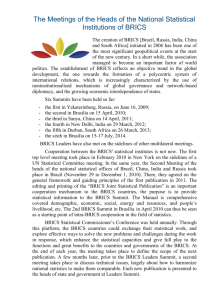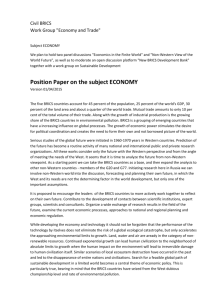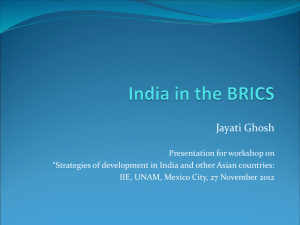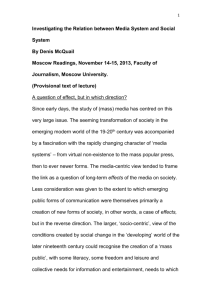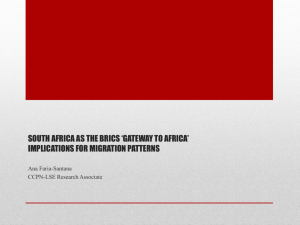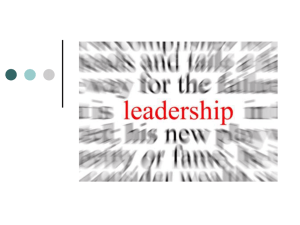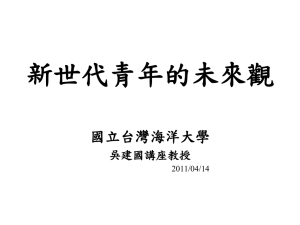Comparative Mass Media Systems
advertisement
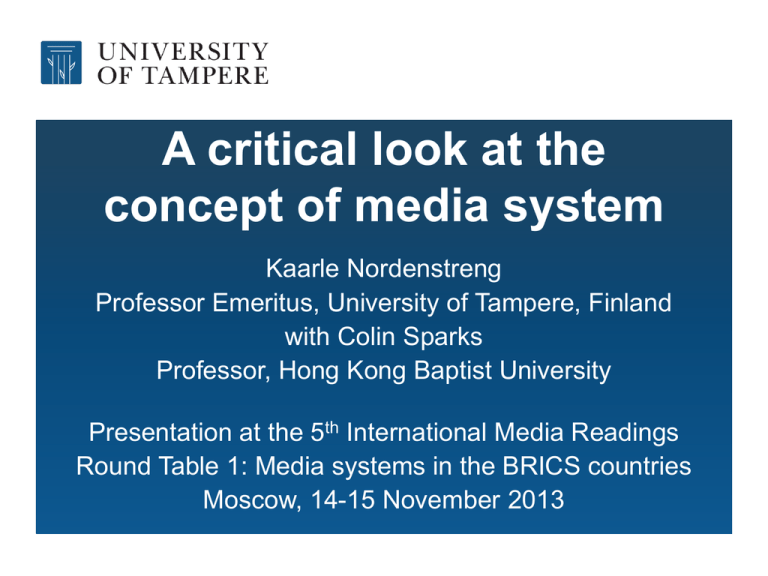
A critical look at the concept of media system Kaarle Nordenstreng Professor Emeritus, University of Tampere, Finland with Colin Sparks Professor, Hong Kong Baptist University Presentation at the 5th International Media Readings Round Table 1: Media systems in the BRICS countries Moscow, 14-15 November 2013 Outline 1. Tradition of research on media systems 2. Assessment with Colin Sparks 3. Prospects with a BRICS project Tradition: Landmarks • Siebert, Peterson & Schramm, Four Theories (1956): Authoritarian, Libertarian, Soc. Resp, Soviet Comm. • Williams, Communications (1966): Authoritarian, Paternal, Commercial, Democratic • Altschull, Agents of Power (1984-1995): West/Market, East/Communitarian, South/Advancing • Schudson, The Power of News (1995): Advocacy, Market, Trustee • McQuail’s Mass Communication Theory (2000-2005): Market, Public Interest, Professional, Alternative • Hallin & Mancini, Comparing Media Systems (2004): Liberal, Democratic Corporatist, Polarized Pluralist Tradition: Variants • Martin & Chaudhary (eds), Comparative Mass Media Systems (1983) • Blumler & Gurevitch, Towards a Comparative Framework for Political Communication Research (1995) • Kleinsteuber, Mediensysteme in vergleichender Perspektive (2002) • Blum, Bausteine zu einer Theorie der Mediensysteme (2005) • Dobek-Ostrowska & Glowacki (eds), Comparing Media Systems in Central Europe (2008) • Christians, Glasser, McQuail, Nordenstreng & White, Normative Theories of the Media (2009) • Hallin & Mancini (eds), Comparing Media Systems Beyond the Western World (2012) …of these, three examples: Roger Blum on a theory of media systems (2005) Dimension 1. Regulatory system 2. Political culture 3. Media freedom 4. Ownership 5. Financing 6. Political parallellism 7. State control of media 8. Media culture 9. Media orientation Liberal line Democratic Polarized No censorship Private Market Weak Weak Investigative Commercial Middle line Authoritarian Ambivalent Occasional c. Private & Publ. Market & State Middle Middle Ambivalent Diverse Regulated line Totalitarian Collaborative Permanent c. Public State Strong Strong Collaborative Public service Blum’s world models based on the 9 dimensions 1. 2. 3. 4. 5. 6. Atlantic-Pacific Liberal model (USA, Australia…) South European Clientelism model (Italy, Spain…) North European Public Sevice model (D, F, NL, S…) East European Shock model (Russia, Turkey, Iran…) Arab-Asian Patriot model (Egypt, Syria, Tunisia…) Asian-Caribbean Commando model (China, Cuba…) …and now to assessment with Colin Sparks: Project objectives • Comparing media systems in BRICS countries by noting both similarities and differences • Locating them in historical and global context • Aiming at theory building beyond dominant western traditions • Maintaining critical distance to BRICS concept itself • Covering journalism against broader information environment including entertainment • Covering both traditional mass media and new internet-based media World Democracy Audit 2013 http://www.worldaudit.org “We define democracy via the criteria of Human Rights; Political Rights; Free Speech; and the Absence of Public Corruption.” Out of 150 countries in January 2013: • Fully democratic – 37 countries Finland Sweden Denmark Norway 1-4, Germany 11, USA 12, UK 13, France 16, Italy 28 • Partly democratic – 33 countries South Africa 44, India 50, Brazil 51 • Non-democratic – 80 countries China 124, Russia 128 15 Prospects • • • • • • Media system is a messy but useful concept It invites us to take holistic and comparative look But we should not miss details and specificities And we should avoid mystifying models Emphasis on conceptual levels and dimensions Open intellectual examination in the spirit of Hallin & Mancini and Christians et al. Thank you! kaarle.nordenstreng@uta.fi http://www.uta.fi/cmt/en/contact/staff/ kaarlenordenstreng/index.html http://www.uta.fi/cmt/tutkimus/BRICS.html
